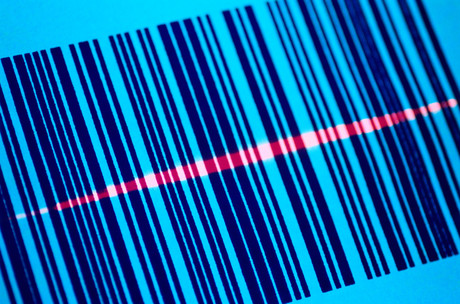Is Amazon sounding the death knell for the barcode?

Amazon Go is ruffling more than a few feathers in supermarket land. It opened its first store in Seattle in January 2018 and has just announced intentions of opening two more — one in Chicago and another in San Francisco.
The first store is very different to standard supermarkets.
Firstly, you can’t get in if you haven’t downloaded the Amazon Go app, which is linked to your Amazon.com account. If you are no- or low-income person on the US’s Supplemental Nutrition Assistance Program or your phone isn’t smart enough to download the Amazon Go app, you won’t be able to shop in the store. In fact, you won’t be able to get into the store. The app allows users to add others to their Amazon account, so children’s and a spouse’s purchases can be charged to the same bill.
Once you are in you will simply load your purchases into your bags and walk out — no trolleys or baskets and no checkouts or cashiers. The whole step of scanning the barcodes on your items at the checkout is obsolete — you just walk out of the store, go home and unload your goodies.
Sadly, this doesn’t mean you scored your groceries for free. Big Brother in the guise of Amazon has watched your every move in the store and recorded every item you collected. Not long after you leave the shop your Amazon account will be debited for your purchases and you’ll get a digital receipt.
The barcode is dead in Amazon Go
Rather than scanning the 2D barcodes on items, Amazon is fusing computer vision, deep learning algorithms and sensor technology to automate the checkout and payment steps for consumers. This same technology will be used for inventory control and supply chain management.
Multiple cameras in the store’s ceiling combined with weight sensors on the store shelves record all items you put into your shopping bag, essentially creating a virtual shopping trolley. If you change your mind and put the item back onto the shelf, the system removes the item from your virtual trolley.
It hasn’t been all plain sailing for Amazon Go to begin operations. The first store was due to open in January 2017 but didn’t actually open until a year later. Problems occurred with the sensors’ ability to track multiple users or objects within the store such as when children move items to other shelves or when more than one customer has a similar body size and weight.
This first store is very small, just 170 m2, and carries a range of prepared foods, meal kits, limited groceries and alcohol. Future stores are expected to be larger.
Anecdotally, there have been rumours that Amazon plans to open 2000 stores in the next 10 years. Amazon has refuted this but other options to extend the technologies employed are possible.
Not least being the potential for Amazon to sell or lease their system technology to other retailers, much as it sells its cloud computing services to other companies.
What does all this mean for the barcode?
If artificial intelligence and machine vision systems can identify products holistically, does this spell the end for barcodes? It is just 45 years since that packet of Wrigley’s chewing gum with the Universal Product Code (UPC) barcode was scanned and now around 6 billion barcodes are scanned. I don’t think their demise is imminent, but I assume it is coming.
Cool melt: is it worth switching?
Why use high-temperature melt adhesives when low-temperature adhesives are also an option? This...
Visy trials its new recyclable fibre-based thermal insulation
Visy is trialling its new insulation alternative to polystyrene, Visycell, which has been...
Re-In-Can-Ation project making Stone & Wood cans more sustainable
Visy is working with Stone & Wood on a pilot project called Re-In-Can-Ation to make beer cans...














